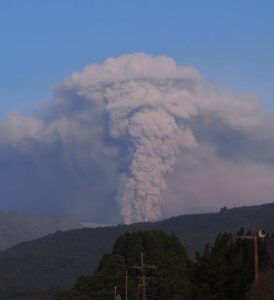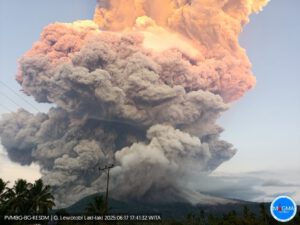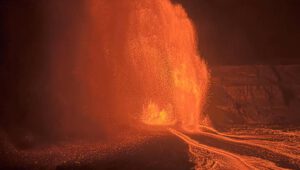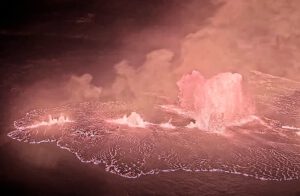Powerful eruption at Lewotobi Laki-Laki – Ash cloud nearly 20 km high disrupts air traffic
Maumere, July 7, 2025 – A powerful explosion occurred today at 11:05 a.m. WITA at Lewotobi Laki-Laki volcano on the Indonesian island of Flores. Volcanic ash was ejected to an altitude of nearly 20 kilometres. A broad pyroclastic flow also formed and moved down the southern flank of the volcano. The high-reaching ash plume caused significant disruptions to air traffic. The VONA alert level has been raised to “Red.”
 According to Indonesia’s volcanology agency (VSI), the ash cloud reached an altitude of 19,584 metres above sea level—an estimated 18,000 metres above the crater. However, the Darwin VAAC reported that satellite data detected volcanic ash at around 15,000 metres altitude.
According to Indonesia’s volcanology agency (VSI), the ash cloud reached an altitude of 19,584 metres above sea level—an estimated 18,000 metres above the crater. However, the Darwin VAAC reported that satellite data detected volcanic ash at around 15,000 metres altitude.
This is the second time in four weeks that flights have been cancelled due to volcanic activity. Both regional flights and international connections between Bali and Australia have been affected. Virgin Australia confirmed that three outbound flights from Bali to Australia were cancelled. Details on disruptions to other airlines are not yet available.
Although a large pyroclastic flow accompanied the eruption, no casualties have been reported. Access to the volcano is prohibited, and a 6-kilometre exclusion zone is in place around Lewotobi Laki-Laki’s summit.
Lewotobi Laki-Laki forms a twin-volcano system with neighbouring Lewotobi Perempuan. The volcano has been intermittently active for nearly two years, producing frequent small eruptions and occasional large explosions such as today’s. However, not all eruptions are harmless: on November 4, 2024, at least ten people died when pyroclastic flows set fire to houses in a village near the volcano’s base.
Today’s eruption came with little warning. Seismic activity increased only slightly in the moments leading up to the explosion, according to VSI monitoring data.








